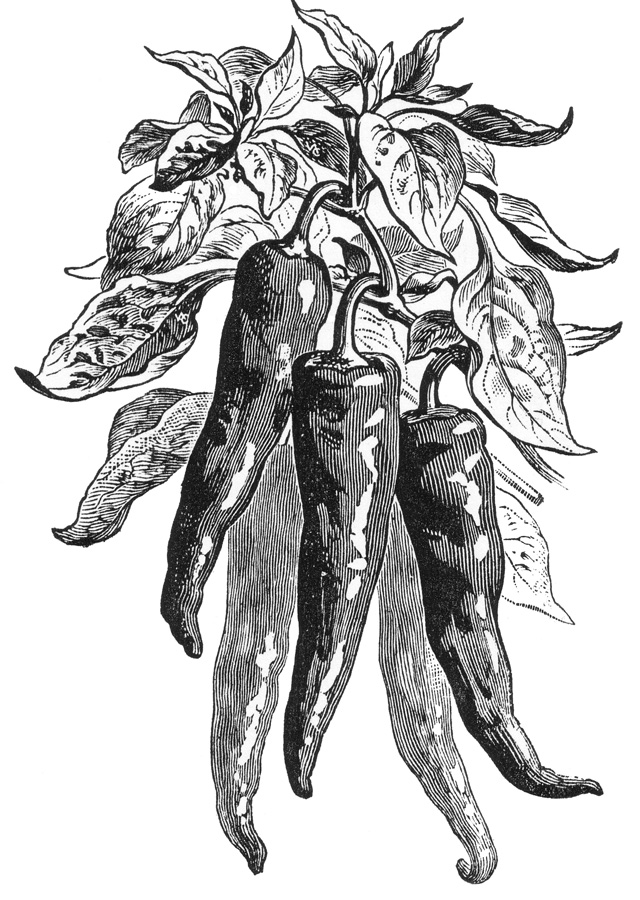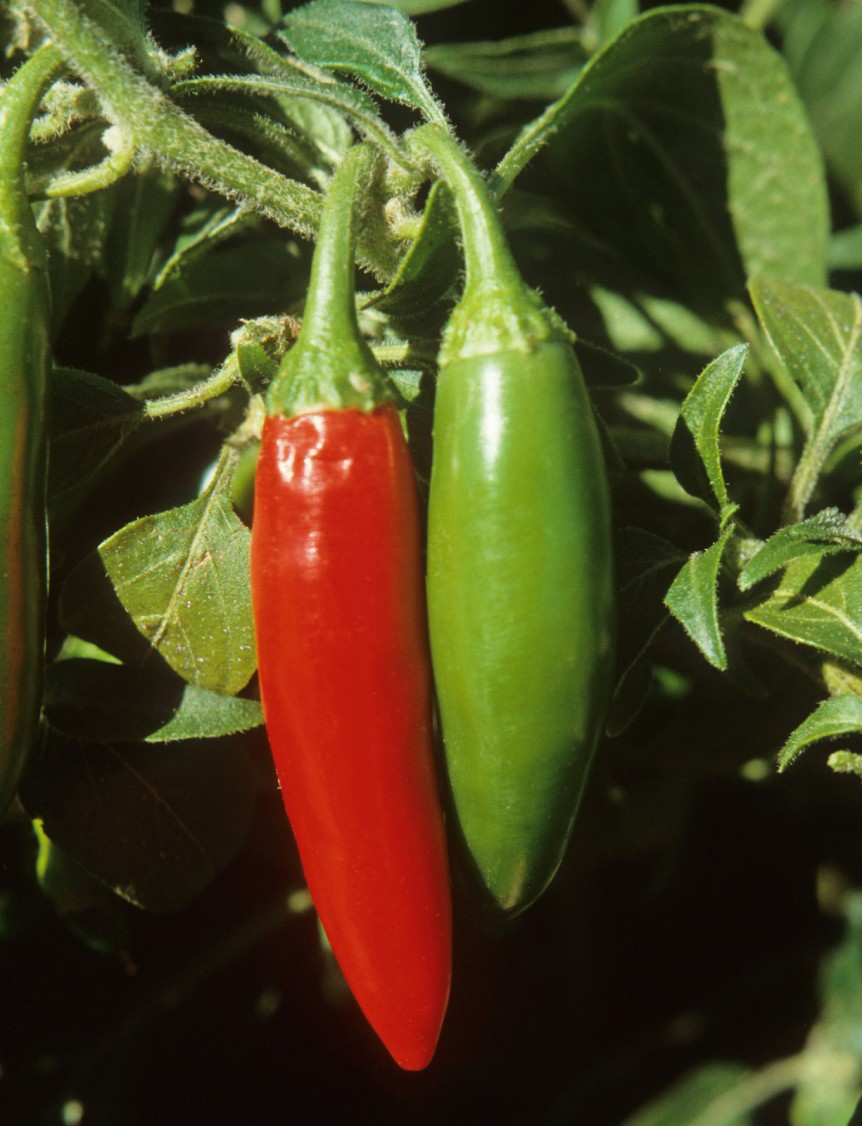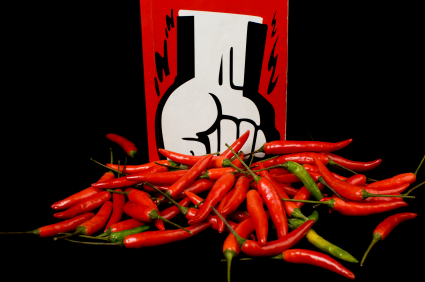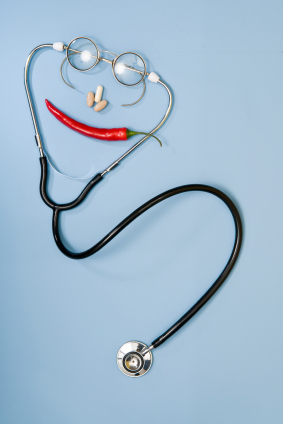In folk medicine, chiles have long been reputed to heal ulcers. “Cayenne rebuilds the  tissue in the stomach and heals stomach and intestinal ulcers,” wrote Diane Robertson in Jamaican Herbs (1982). Her view is upheld by Bolivian Indians who suffer from stomach ulcers. In what is probably an extremely painful treatment, the ulcerous patients are fed fresh rocoto chiles (Capsicum pubescens), one of the hottest varieties in the world. For fourteen to eighteen days, patients are fed the chiles, beginning with one the first day, two the second day, and so on until they are cured. It is difficult to imagine anyone consuming eighteen of these chiles raw in a single day. That would probably result in a severe case of rocoto-proctitis. However, the concept of high dosages of capsaicin to fight high infections of bacteria is not that far-fetched. But what about the pain? Most people who consume large quantities of chiles don’t have stomach pain–and they don’t have ulcers, either.
tissue in the stomach and heals stomach and intestinal ulcers,” wrote Diane Robertson in Jamaican Herbs (1982). Her view is upheld by Bolivian Indians who suffer from stomach ulcers. In what is probably an extremely painful treatment, the ulcerous patients are fed fresh rocoto chiles (Capsicum pubescens), one of the hottest varieties in the world. For fourteen to eighteen days, patients are fed the chiles, beginning with one the first day, two the second day, and so on until they are cured. It is difficult to imagine anyone consuming eighteen of these chiles raw in a single day. That would probably result in a severe case of rocoto-proctitis. However, the concept of high dosages of capsaicin to fight high infections of bacteria is not that far-fetched. But what about the pain? Most people who consume large quantities of chiles don’t have stomach pain–and they don’t have ulcers, either.
Herbalists strongly believe that cayenne can cure ulcers. Dr. Daniel Mowrey, author of The Scientific Validation of Herbal Medicine, writes: “Ulcers, even the ulcers with the H. pylori, don’t stand a chance. Cayenne kills the bacterium and heals ulcers by stimulating the mucous lining of the stomach. Eventually new tissue develops without interfering with the stomach’s ability to absorb nutrients.”
Scientific studies, however, have shown mixed results. One 1985 study cited in the British Medical Journal reported: “Red chiles were found not to influence the healing of the duodenal ulcer.” This was a four-week study where ulcer sufferers were fed a dosage of three grams of red chile powder a day.” However, that study and numerous others proved that capsaicin does not damage the gastic mucosa, as was previously thought. Another study, with rats in Singapore, indicated that capsaicin does inhibit ulcers. Researchers therorize that capsaicin triggers gastric nerves to release calcitonin gene-related peptide, which boosts blood flow.
As is typical in many medical questions, the experts disagree about the effectiveness of chile on ulcers. However, anecdotal evidence continues to indicate that there are fewer ulcers in populations that consume high amounts of chiles. In Singapore, for example, ulcers are three times more prevalent in the Chinese community, which consumes mild food, than in the Indian and Malay communities, which crave the hot stuff.








